Vampire discovered in mass grave?
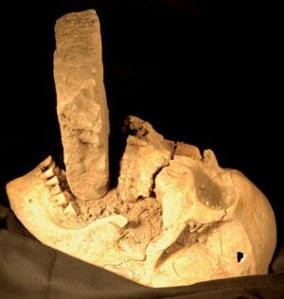 Friday’s New Scientist has a tantalizing little item about the supposed discovery of the skeleton of a “vampire” in Venice. The body, which was discovered during the excavation of mass graves dating from the plague of 1576 on the island of Lazaretto Nuovo, was found buried with a brick forced into its open mouth, as the rather unsettling image to the right depicts.
Friday’s New Scientist has a tantalizing little item about the supposed discovery of the skeleton of a “vampire” in Venice. The body, which was discovered during the excavation of mass graves dating from the plague of 1576 on the island of Lazaretto Nuovo, was found buried with a brick forced into its open mouth, as the rather unsettling image to the right depicts.
Sadly I don’t have a decent cultural history of vampires to hand (though if you’re after one, Amazon is up to their eyeballs (or is that eye teeth?) in them) but it’s difficult not to be struck by the manner in which the vampire myth continues to infect our culture. Quite aside from the not-insubstantial literature of the gothic underground, the past few years have seen at least two television series (Buffy the Vampire Slayer and True Blood), the Twilight phenomenon and a slew of novels ranging from J.R. Ward’s erotic Black Dagger Brotherhood series to Peter Watts’ hard-edged (and all the more terrifying for it) neurobiological take on the vampire myth in the Hugo Award-nominated Blindsight
(if you’re interested in taking a look, Watts has published the novel online under a Creative Commons license — I particularly recommend his ‘Brief Primer on Vampire Biology’ if you want to see someone take a serious stab at making the myth make scientific sense).
The reasons for this are complex, but I suspect they’re also oddly basic. The vampire myth, whether in its contemporary, Western form or its various variants and precursors draws together the two deepest elements of the human psyche, sex and death, and binds them together (indeed in a very real sense it is the distorted mirror image of that other great ritual of blood and death and the acceptance of another’s flesh into one’s own body, the Christian communion). It’s a potent brew, so potent, in fact, that in some very real sense the vampire is a kind of universal signifier, able to accommodate almost any anxiety about sex or death, from Dracula’s fin de siecle anxieties about sexuality and moral decline, to anxieties about homosexuality, and blood, and disease, to the images of a death-obsessed Old World which drive Christos Tsiolkas’ Dead Europe. It can also, in the manner of these things, become so overdetermined as to signify not much at all, as the oddly engaging but essentially silly True Blood demonstrates.
All the same, it’s chastening to be reminded of the extent to which, even now, in a world transformed by technology, we are still creatures of our biology, driven by the primitive urges of fear and desire, and haunted by nightmares that, for all that their digital sophistication, are essentially the same as the fears that drove the plague-battered people of Venice to bury a woman with a brick rammed in her mouth four and a half centuries ago.
Break text





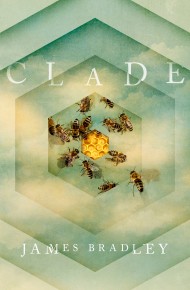


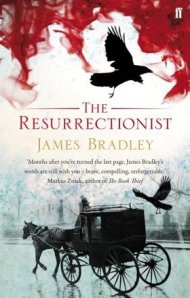
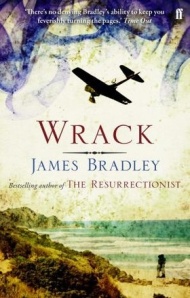
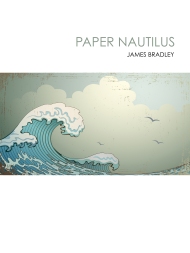
Trackbacks & Pingbacks